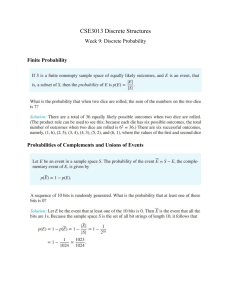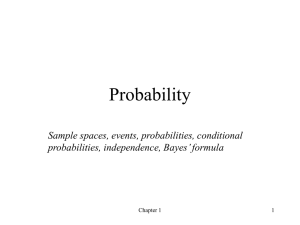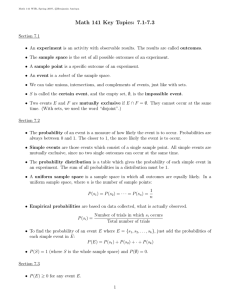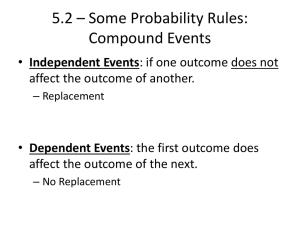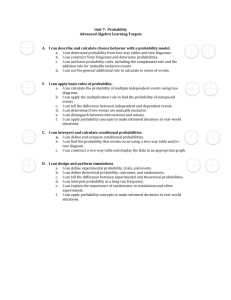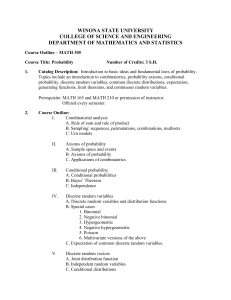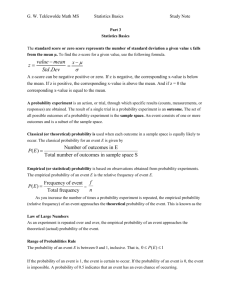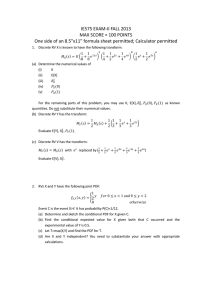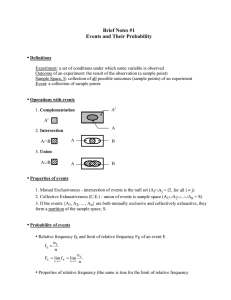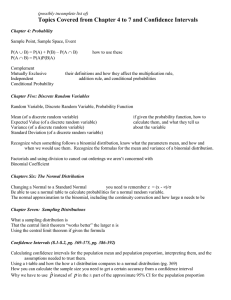Probability & Statistics Chapter 2 Reading Comprehension Questions
advertisement
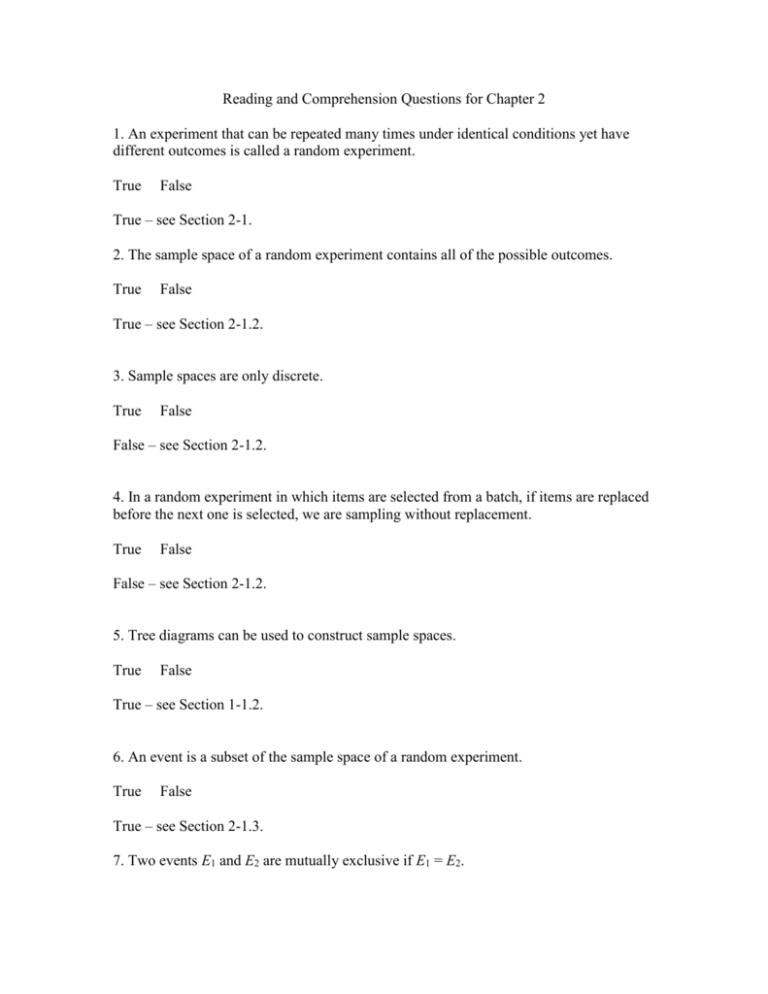
Reading and Comprehension Questions for Chapter 2 1. An experiment that can be repeated many times under identical conditions yet have different outcomes is called a random experiment. True False True – see Section 2-1. 2. The sample space of a random experiment contains all of the possible outcomes. True False True – see Section 2-1.2. 3. Sample spaces are only discrete. True False False – see Section 2-1.2. 4. In a random experiment in which items are selected from a batch, if items are replaced before the next one is selected, we are sampling without replacement. True False False – see Section 2-1.2. 5. Tree diagrams can be used to construct sample spaces. True False True – see Section 1-1.2. 6. An event is a subset of the sample space of a random experiment. True False True – see Section 2-1.3. 7. Two events E1 and E2 are mutually exclusive if E1 = E2. True False False – see Section 2-1.3. 8. If there are 6 digits in an automobile license tag, and each digit must be one of the 10 integers 0, 1, …, 9, then there are 106 possible license tags. True False False – the answer is 610; see Section 2-1.4. 9. If a sample space consists of N possible outcomes that are equally likely, the probability of each outcome is 1/N. True False True – see Section 2-2.1. 10. For a discrete sample space the probability of an event is the sum of all of the probabilities of the outcomes associated with the event. True False True – see Section 2-2.1 11. If S is the sample space of a random experiment and E is any event, the axioms of probability are: a. P(S) = 1 b. 0 P ( E ) 1 c. For any two events E1 , E2 with E1 E2 , P( E1 E2 ) P( E1 ) P( E2 ) d. All of the above e. None of the above. Answer is d – see Section 2-2.2. 12. The axioms of probability can be sued to assign probabilities to events. True False False – see Section 2-2.2. 13. The addition rule of probability is P( A B) P( A) P( B) P( A B) . True False True – see Equation 2-5. 14. If A and B are mutually exclusive, then P( A B) P( A) P( B) P( A B) . True False False – see Equation 2-8. 15. The probability of an event B given the knowledge that the outcome will be in event A is called the conditional probability of event B given A. True False True – see Section 2-4. 16. The conditional probability of event B given A is P( B | A) P( A B) / P( A), P( A) 0. True False True – see Equation 2-9. 17. The multiplication rule of probability states that P( A B) P( B | A) P( A) P( A | B) P( B). True False True – see Equation 2-10. 18. The total probability rule is P( A B) P( B | A) P( A). . True False False – see Equation 2-12. 19. Two events A and B are independent with P( A) P( B) 0.5. The P( A B) is : a. 0.50 b. 0.75 c. 0.20 d. 0.25 Answer is d; see Equation 2-13. 20. Bayes’ theorem states that P( A | B) True P( B | A) P( A) . P( B) False True – see Equation 2-15. 21. Random variables can be either discrete or continuous. True False True - see Section 2-8.
